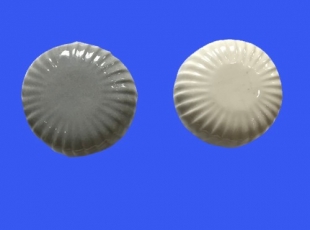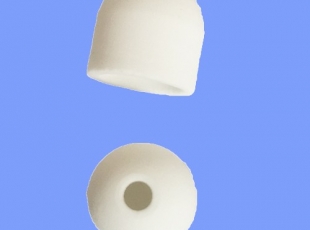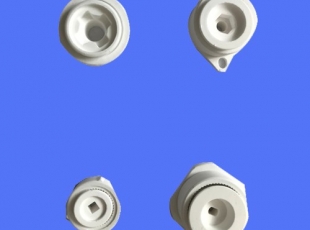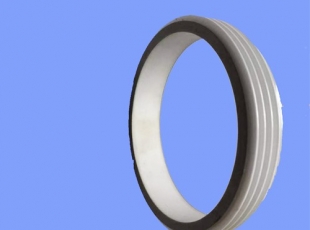Toughening technology of alumina ceramic ring
Toughening technology of alumina ceramic ring
Metal materials are easy to produce plastic deformation, because the metal bond is not directional. In ceramic materials, the bond between atoms is covalent bond and ionic bond, covalent bond has obvious directionality and saturation, while the same ion of ionic bond has great repulsion when it is close to, so the ceramic mainly composed of ionic crystal and covalent crystal has few slip systems, and generally breaks before slip occurs.
In order to reduce the brittleness of alumina based ceramic materials, in addition to the advanced preparation process, extensive and in-depth research on the toughening technology of alumina ceramics is also needed. At present, the research focuses on the following aspects.
1. Phase transformation toughening
The phase transformation as a means of toughening ceramics and achieving remarkable results began from the study of partially stabilized zirconia to improve the thermal shock resistance. Due to the characteristics of zirconia phase transformation, zirconia toughened alumina ceramics have been proved to have good toughening effect. At present, ZTA based on transformation toughening has been used as the structural material of many parts.
The solid phase transformation of pure zirconia is from square phase (T) to monoclinic phase (m), which belongs to martensitic transformation and will produce 3% - 5% volume expansion. When the crack propagates into the region containing t-ZrO2 grains, under the action of the stress field at the crack tip, the t-ZrO2 in the process region will undergo t → M phase transformation, so the energy will be absorbed not only by the new fracture surface, but also by the volume effect (expansion) during the phase transformation. At the same time, due to the volume expansion of t → M phase change particles in the process area, the compressive stress is produced on the crack, which hinders the crack growth.
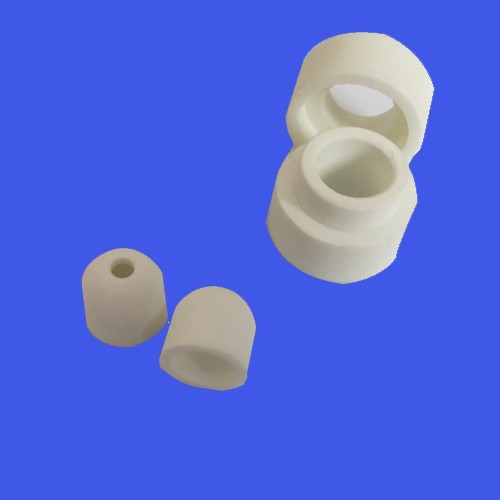
Relatively speaking, it is to improve the critical stress intensity factor of crack tip fracture toughness. By introducing t → m transformation toughening of ZrO2 and microcrack toughening and residual stress toughening derived from t → m transformation into alumina matrix, the toughness can be significantly improved.
So far, phase transformation toughening with partially stabilized zirconia is one of the most successful toughening methods. However, many brittle materials do not necessarily have this kind of phase transformation which is conducive to toughening, and it is also greatly affected by temperature, so this toughening method can not be widely used.
2. Toughening of whiskers, fibers and carbon nanotubes
Compared with phase transformation toughening of alumina based ceramics, whisker and fiber toughening is a promising toughening technology. When the whiskers are pulled out and fractured, they need to consume a certain amount of energy, which is beneficial to prevent the crack growth. Increasing the whisker strength and reducing the elastic modulus of the whisker are beneficial to improving the toughness of the material, and increasing the whisker size (length, radius and length diameter ratio) can improve the toughening effect of the whisker.
Ceramic composites with high strength and toughness can be obtained by adding oriented or oriented or disordered fibers into the ceramic matrix, which has become one of the development directions in the field of alumina ceramics. In order to achieve the purpose of Fiber Composite Toughening, two conditions must be met between the fiber and the matrix material: ① the elastic coefficient of the fiber that plays the role of reinforcement must be higher than that of the alumina ceramic matrix; ② the fiber and the matrix must be compatible.
3. Particle dispersion toughening
The mechanical properties of ceramic materials can be improved by adding granular metal phase. The introduction of ductile metal phase into brittle ceramics has been proved to be a promising toughening method. Metal particles introduced into ceramic matrix as the second phase of ductility not only improve the sintering performance of ceramic, but also hinder the crack growth in ceramic materials in many ways, so that the bending strength and fracture toughness of composite materials can be improved.
When the shape is granular, the toughening mechanism is mainly crack deflection, while the plastic deformation of metal mainly occurs in the composite material with the shape of fiber and sheet. Ceramic and intermetallic compounds are materials that can be used at high temperature.
Through the refinement of matrix grain and the shielding effect of crack, the driving force of crack advance is dissipated, and the purpose of toughening is achieved. Although the effect is not as good as that of fibers and whiskers, the process is simple and easy, and the cost is low. As long as the type, size, content and other parameters of particles are selected properly, the toughening effect is very obvious.
4. Toughening by nanotechnology
The research on nano materials and nano technology is likely to make a revolutionary breakthrough in ceramic toughening technology. On the one hand, the number of grain boundaries will be greatly increased due to grain refinement of nano ceramics. At the same time, when the pore and defect size of nano ceramics are reduced to a certain size, the macro strength of the material will not be affected. As a result, the strength and toughness of the material will be greatly increased. On the other hand, the introduction of nano dispersed phase into the ceramic matrix and composite can not only greatly improve its strength and toughness, but also significantly improve its high temperature resistance.
Therefore, nano alumina ceramics and nanocomposites have become one of the important ways to improve their fracture toughness.
The strengthening and toughening mechanism of nano composite ceramics is mainly reflected by the following effects: ① the introduction of dispersion phase effectively controls the growth of matrix grains and reduces the abnormal growth of grains; ② the existence of local stress around the dispersion phase or dispersion phase, which makes the grains refined and weakens the role of the main crystal boundary; ③ the high temperature of nano particles affects the dislocation movement, making the high temperature mechanical properties such as hardness and strength The degree and anti creep were improved.
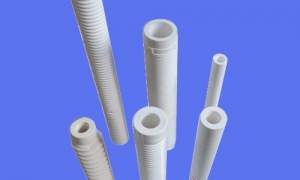
What are the sintering and functions of alumina ceramics?
The strength of alumina ceramics is only a millionth different from that of diamond. However, if alumina ceramics and wear-resistant steel, or stainless steel plates are used to develop wear resistanc...
Time of publication:2019-12-19
Changes of alumina ceramic structure at high temperature
Alumina ceramics is a kind of ceramics with alumina as the core, which is characterized by super high hardness, light weight, high heat conduction, high brittleness and wear resistance. Because cerami...
Time of publication:2019-12-18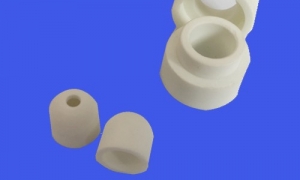
Toughening technology of alumina ceramic ring
Toughening technology of alumina ceramic ringMetal materials are easy to produce plastic deformation, because the metal bond is not directional. In ceramic materials, the bond between atoms is covalen...
Time of publication:2019-12-14
Injection molding of alumina ceramic tube
Alumina ceramic tubes have excellent properties such as high mechanical strength, wear resistance, corrosion resistance, high temperature resistance, high thermal conductivity and resistivity. They ar...
Time of publication:2019-12-10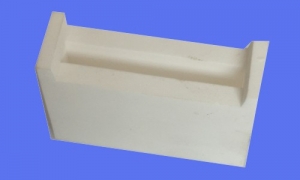
What is the difference between alumina ceramics and ordinary ceramics?
Alumina ceramic is a kind of ceramic material with alumina (Al2O3) as the main body, which is used in thick film integrated circuit. Alumina ceramics have good conductivity, mechanical strength and hi...
Time of publication:2019-12-10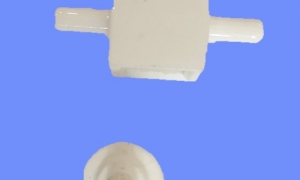
What can alumina ceramics be used for?
Application of alumina ceramics 1. Mechanical The bending strength of Al2O3 sintered products can reach 250Mpa, and that of hot pressed products can reach 500MPa...
Time of publication:2019-12-09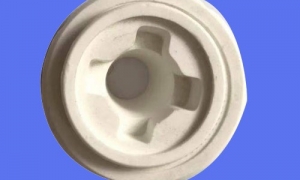
What are the preparation methods of alumina ceramics?
Preparation of alumina ceramics 1. Preparation of powderAluminum oxide powder is prepared into powder materials according to different product requirements and different molding pr...
Time of publication:2019-12-09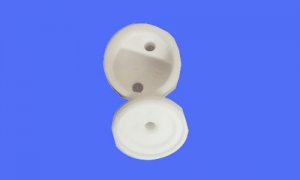
Introduction of sintering process of alumina ceramics
Introduction of sintering process of alumina ceramics 1. Atmospheric sinteringSintering at atmospheric pressure means that materials are sintered under atmospheric pres...
Time of publication:2019-12-09
Column navigation/Column menu
1What are the sintering and functions of alumina ceramics?
2019-12-19

2Changes of alumina ceramic structure at high temperature
2019-12-18

3Toughening technology of alumina ceramic ring
2019-12-14

4Injection molding of alumina ceramic tube
2019-12-10

5What is the difference between alumina ceramics and ordinary ceramics?
2019-12-10

6What can alumina ceramics be used for?
2019-12-09


